Sometimes, in the world of wildlife tourism, animal abuse is easy to identify. Elephants in Thailand show the scars from being chained, lion cubs used for petting are separated from their mothers so they can be pet by tourists, tigers lie around in a drugged stupor so it is easy to take a tiger selfie, and orca whales kept in captivity show a collapsed fin, a sign of less than optimal health. Other animal attractions that are detrimental to wildlife, however, are not so obvious. They require a bit of research. Take swimming with stingrays.
This wildlife attraction has become very popular in places like the Cayman Islands, Antigua, Belize, Australia, Moorea, and Mexico. People obviously love it. But is it bad for the stingrays? At first glance you might say to yourself…
Hey, they’re not captive, they come and go as they please, so what is wrong with swimming with stingrays?
How the ‘Swimming with Stingrays in the Cayman Islands’ Attraction Started
Snorkeling with stingrays in the Cayman Islands is a very popular wildlife attraction. It all started back in the 1930’s when fishermen started feeding them scraps and a few tourists came to watch. Then, soon after, the ‘swimming with stingrays’ tourist activity was moved to a nearby shallow sandbar (what today is knows as Grand Cayman Stingray City Sandbar) to allow people to stand in the shallow waters without having to get in the water and snorkel or dive. Since 1986 intentional feeding has been permitted to attract more stingrays to the site.
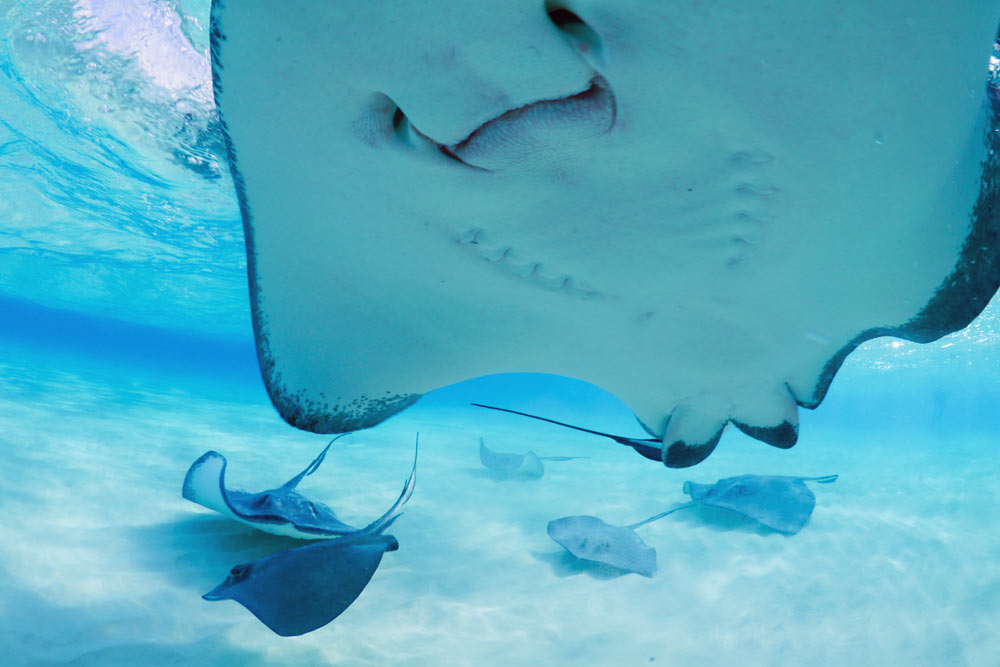
Right now this attraction draws close to a whopping 1 million visitors each year to the Cayman Islands, and during the Grand Cayman Stingray City tours and at the Stingray City Sandbar you are allowed to feed, pet, and play with stingrays. A quick google search will bring over 10 different tour companies offering “eco-tours” to go snorkel and interact with stingrays (“play with the stingrays” as some operators say). At first glance, nothing would tell you that this is a bad activity, after all, the sting rays are free to come and go, and yet they choose to stay where the tourists are.
Swimming with Stingrays in Stingray City Antigua and other Parts of the World
Same scenario as in the Cayman Islands. Tourists flock to Stingray City Antigua to swim with the stingrays, feed them, and pet them. This wildlife attraction has also become very popular in places like Mexico’s Isla Contoy, Moorea in French Polynesia, Shark Ray Alley in Belize, and Hamelin Bay in Western Australia.
Why Swimming with Stingrays is Not Good for the Rays
The continuous feeding (sometimes daily) of the southern stingray (Dasyatis americana ) for wildlife interaction tourism purposes has changed the natural behavior of these animals in several ways.
The southern stingray is mainly solitary (sometimes seen in pairs or in groups when migrating) and feeds primarily at night on bivalves, worms, and crustaceans. At least this is how wild southern stingrays normally behave.
Once you introduce continuous feeding, here’s what happens:
1) Wild Southern Stingrays are Mainly Solitary
Due to the constant feeding, the normally solitary stingrays are now attracted to tourist areas in large numbers. This has resulted in a higher frequency of interactions between stingrays, leading to elevated disease transmission, increase in parasites, and injuries (mainly bites from other stingrays). Competition for food and aggressive interactions among the rays is revealed by the frequent bite marks on the trailing edges of the pectoral fins of fed stingrays.
2) Wild Southern Stingrays are Nocturnal
The southern stingray is naturally a nocturnal species that forages at night and remains stationary during the day, usually burrowed in the sand.
But the tourist boats don’t arrive until daytime. This has caused a change in the stingrays daily activity, from a nocturnal forager over large areas to a diurnal beggar in a small area.
This study found that “the average activity space of the wild stingrays at night was 45 times greater than the average activity space of the fed stingrays during the day (0.63±0.36 km2 vs. 0.014±0.003 km2, respectively)” This means that the stingrays are not traveling, are not moving, and are becoming sedentary. Like a couch potato.
Another potential issue is that instead of burrowing under sand during the day, these stingrays are now constantly swimming near the surface, and getting exposed to far more ultraviolet rays from the sun. While there are no current studies measuring the effects of this increased exposure, it is not a big stretch to assume that their skin is not prepared for this sudden change. We know that dolphins can get skin cancer after years of being confined in a small shallow aquarium pool instead of living in the deep ocean. Could stingrays be getting skin damage too?
3) Wild Southern Stingrays Don’t Eat Squid…Unless You Feed it to Them
What do stingrays eat? Wild stingrays feed on a mix of bivalves, worms, and crustaceans.
At these tourist sites they are almost almost exclusively fed a non-natural diet of packaged California squid, Loligo opalescens, provided by tour operators. Probably because it is cheaper.
A few different studies, like this one and this one, have examined the effects of this unnatural diet on the stingrays’ health. They found that a diet of California squid is actually detrimental and that the fed stingrays are now displaying sub-optimal health.
4) Stingrays are More Vulnerable in Big Numbers
As mentioned, stingrays that gather in large groups in a small area are more susceptible to disease and attacks by other stingrays, but this also makes them more vulnerable to attack by larger predators.
These large congregations of stingrays are now attracting predators like the great hammerhead shark (Sphyrna mokarran). One study observed more than twice the normal level of predator inflicted wounds on stingrays in tourist areas.
Another danger is the increased level of wounds inflicted by boats in tourist areas. The study found that the probability of being injured was far higher for tourist stingrays (85%) than for non tourist area stingrays (30%)
5) How their Ecosystem is Affected
It’s not just the behavior, health, and safety of stingrays that is being altered by our tourism activities, but the entire ecosystem can also change because of it. And not in a good way.
When an animal is introduced to an area in high concentrations, ecosystems begin to suffer. For example unnaturally high numbers of stingrays in an area leads to unsustainable predation of bivalves, worms, and crustaceans in the same area. When these are depleted, even the stingrays that are not participating in the feeding become more aggressive towards one another in an attempt to secure what little remains of their wild prey. This also applies to other species that depend on these natural food sources.
More stingrays also means more metabolic and nitrogenous wastes that cycle through the system, which can influence entire marine communities.
On top of all this, the huge number of tourists create their own waste (be this organic, plastic, or petroleum from boats) directly increasing pollution levels in these regions.
What is a Better Alternative?
If you visit the Cayman Islands and ask Where can I swim with stingrays? realize that you don’t have to visit a feeding site like Stingray City Grand Cayman in order to enjoy stingrays in the wild. Many responsible snorkeling tour operators can get you to natural areas that stingrays frequent, without resorting to unnatural feeding. Try searching for responsible snorkeling operators in the area you’re visiting. This is the way to can swim and snorkel with stingrays ethically.
Unfortunately, it can be extremely difficult to find a tour operator in the Caymans that doesn’t offer snorkeling with stingrays tours to Stingray City. However, many of them offer snorkel options that do not include Stingray City Sandbar or feeding wildlife. Let operators know why you are not going swimming with stingrays with them! If you can’t find any, try a different destination.
Unlike some parts of the world, the Caribbean doesn’t have a certification organization for responsible snorkel and dive operators. For example, Greenfins maintains an excellent list of environmentally responsible dive centers in Southeast Asia. If you know of such an organization in the Caribbean, please let us know in the comments below so we can add it.
Quick tips for swimming with stingrays in the wild.
• Avoid operators and attractions that feed wildlife. Wouldn’t you rather see healthy happy animals behaving naturally?
• Don’t touch wildlife. When you do encounter stingrays in the wild, don’t chase, harass, and attempt to touch them. Yes, it may be safe and fun for you to touch a stingray, but that doesn’t mean they enjoy be approached and harassed by other large animals! Let them be.
Thank you to Clare Prebble for sharing some of the photos used in this article.
READ THIS NEXT:
A Guide to Ethical Shell Collecting
Did You Enjoy this Article? PIN IT!
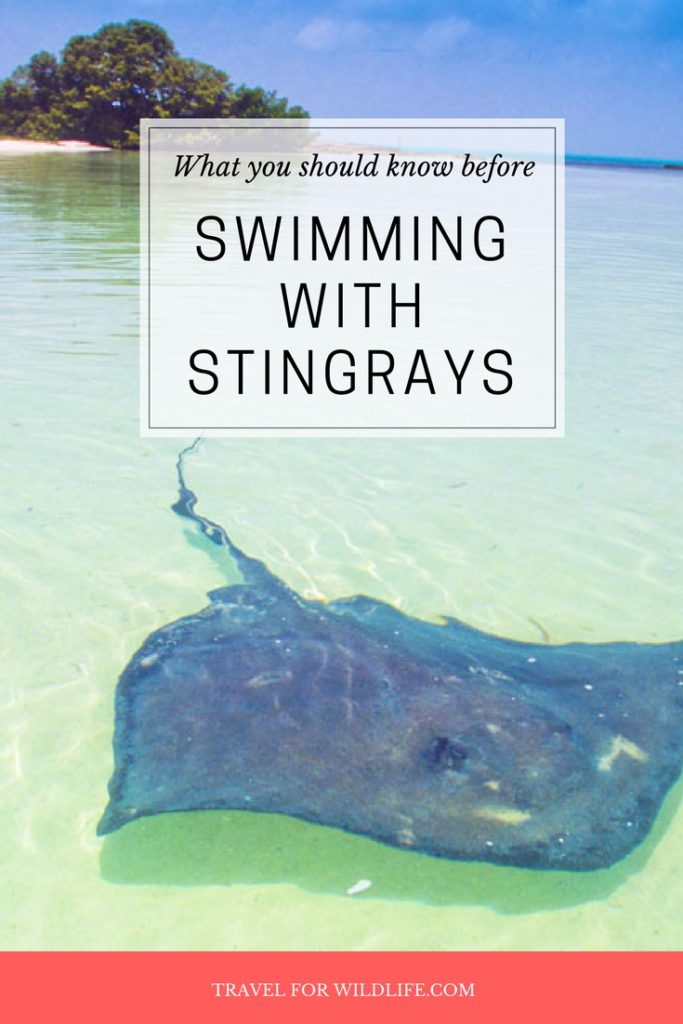

Cristina Garcia
Zoologist and wildlife photographer. She has worked in the field with jackals, wolves, cheetahs, & leopards. She serves on the Board of Directors of SEE Turtles, a non-profit sea turtle conservation organization.
Read her posts at Travel For Wildlife and see more of her work at Truly Wild, & Our Wild Yard.

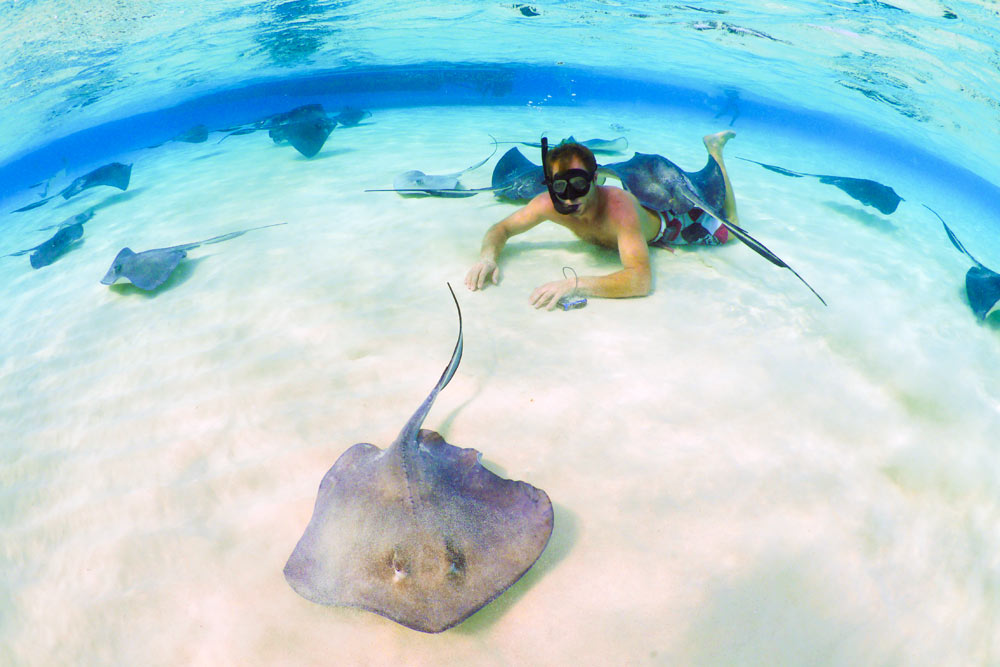
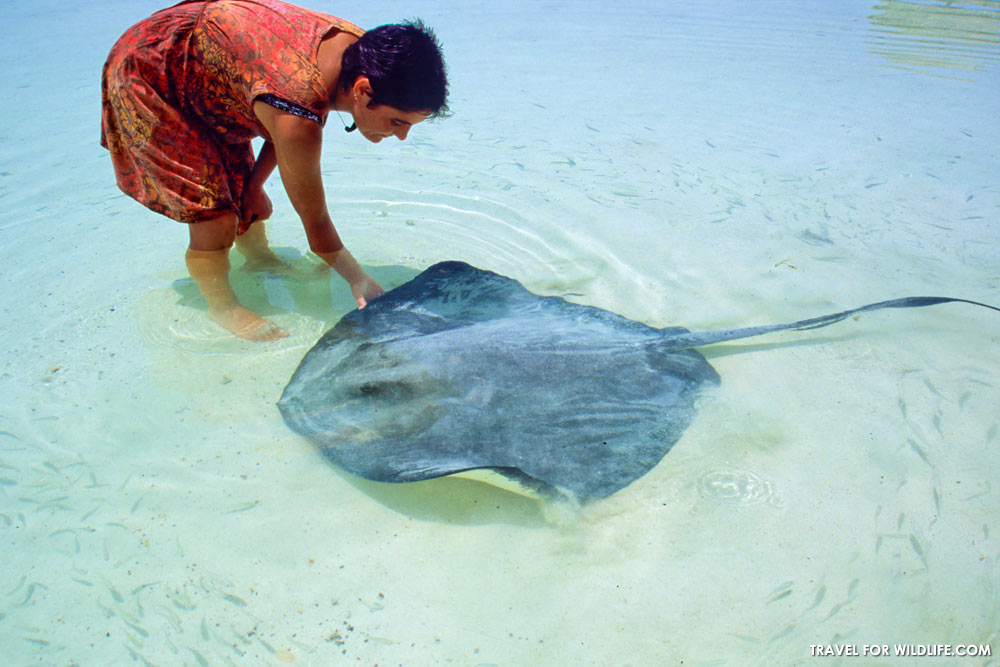
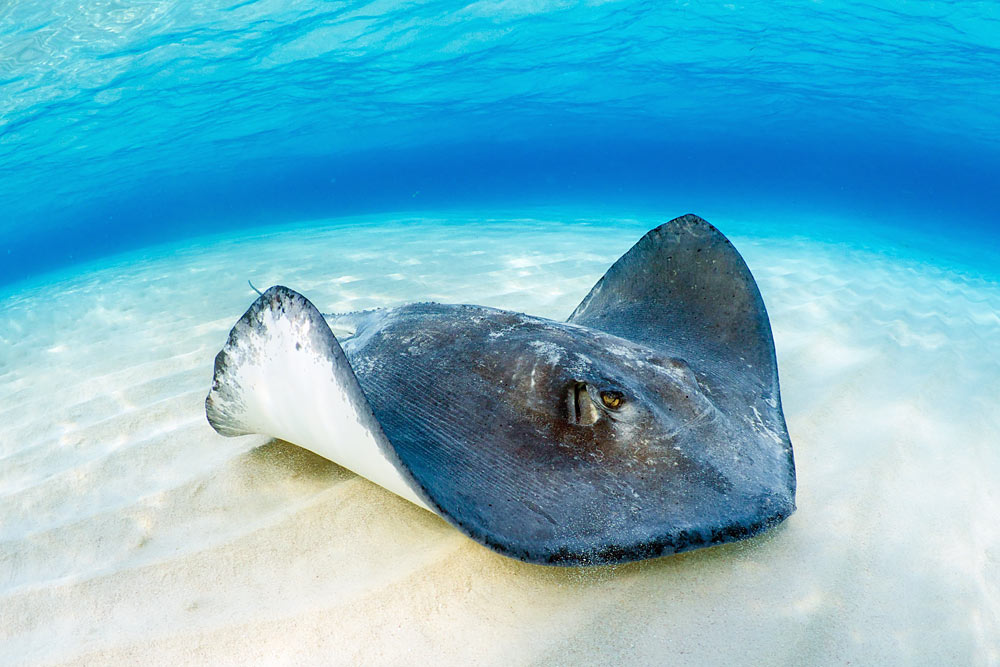
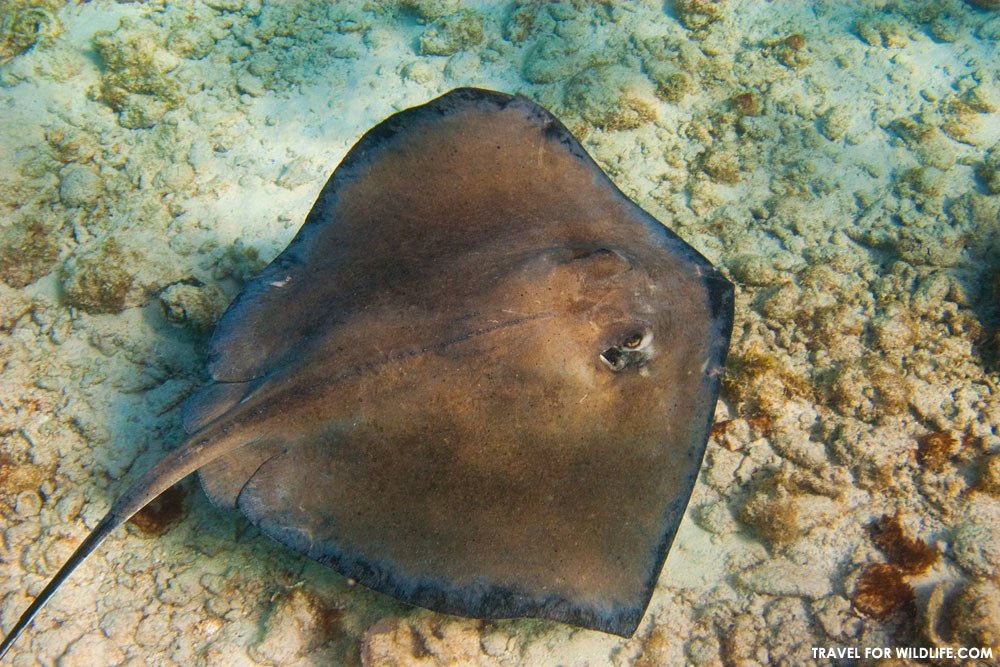
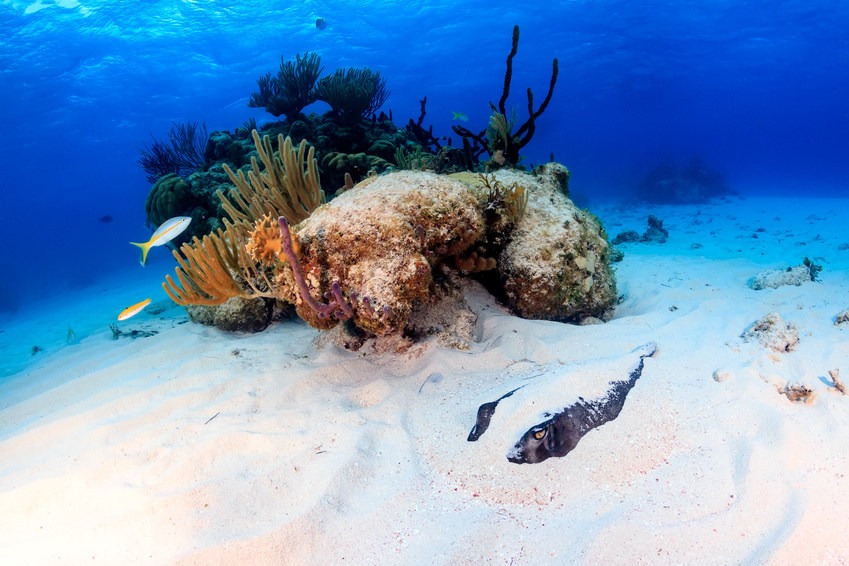
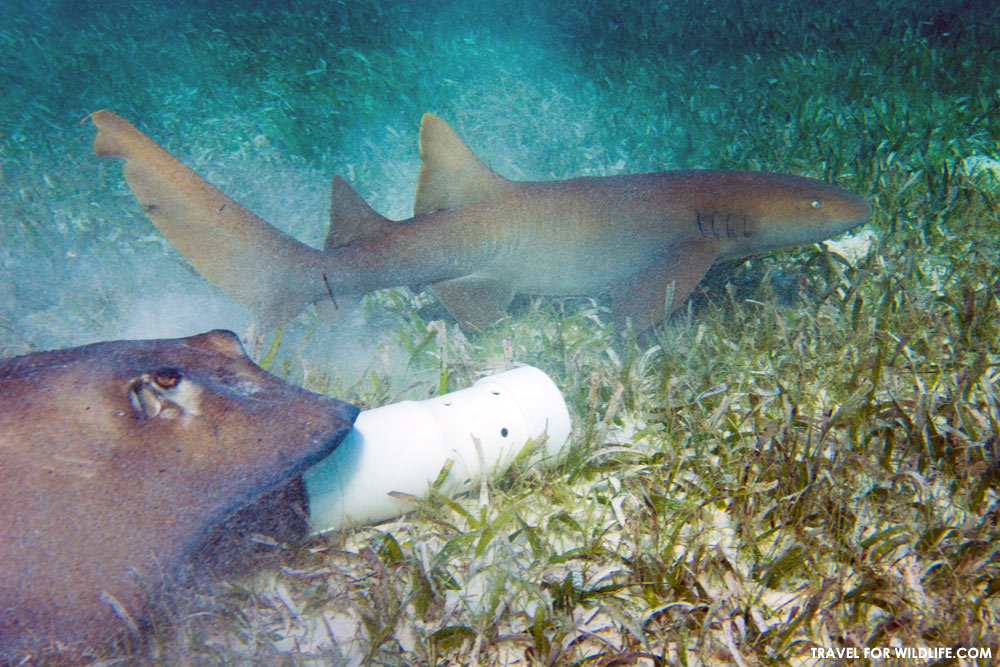
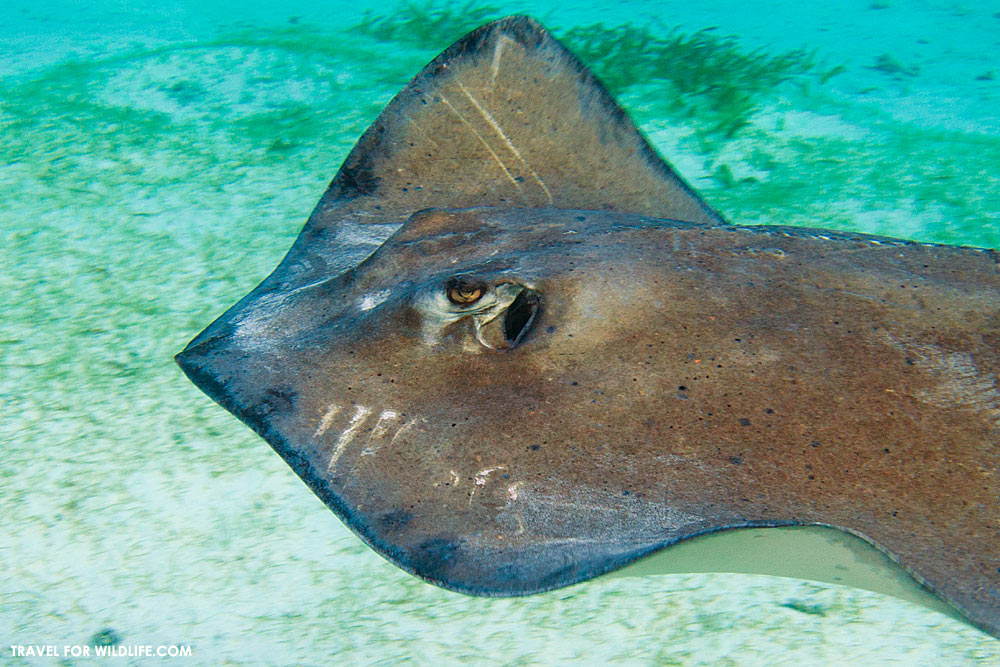
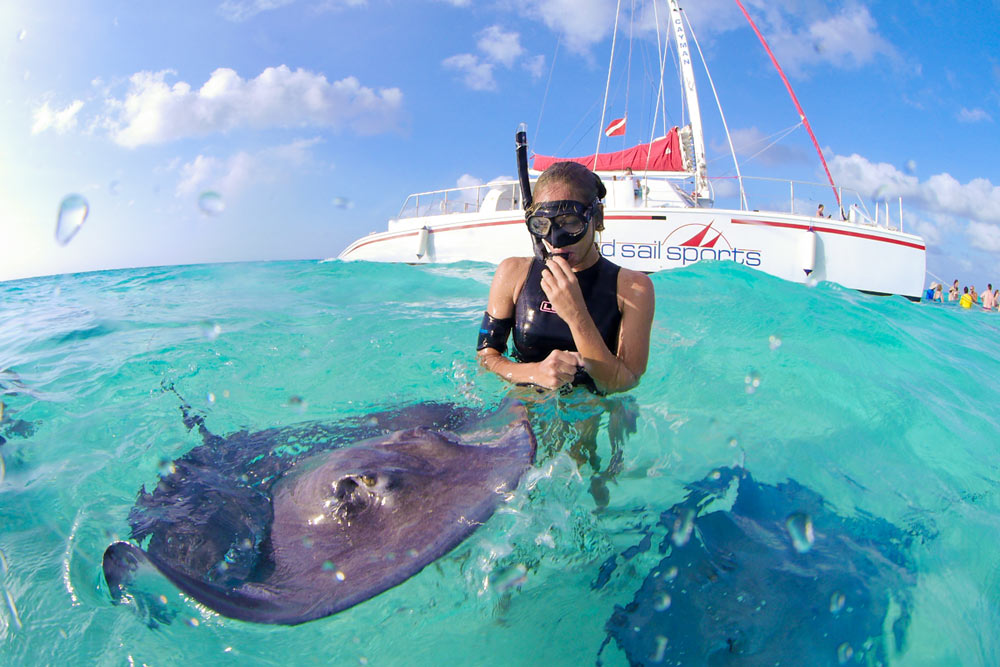
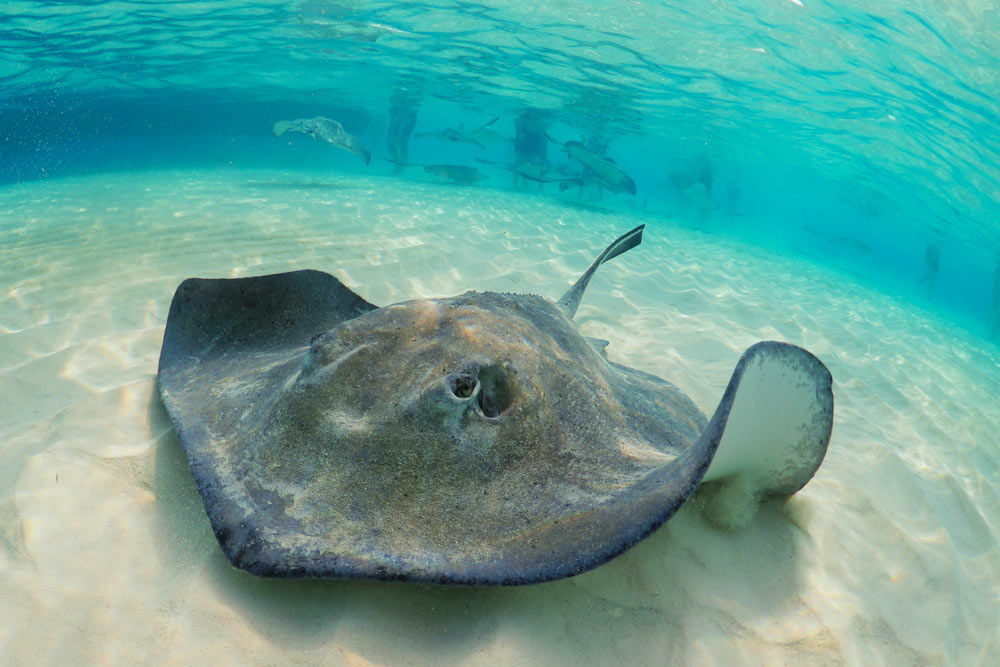
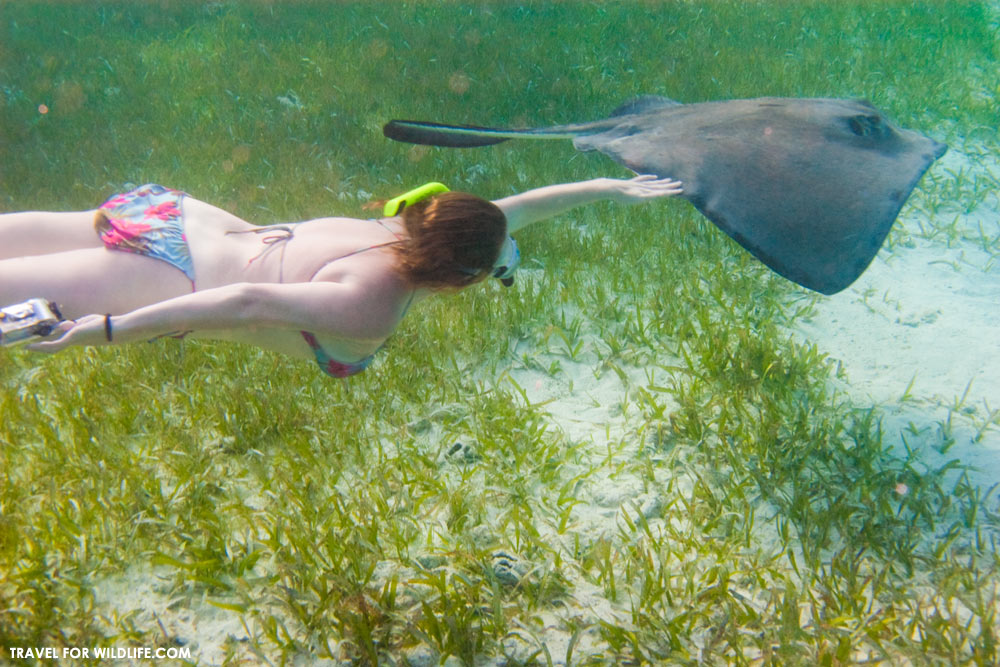
Joe
Wednesday 25th of October 2023
While I agree, one could say the same thing about domesticated pets.
K.Burns
Monday 6th of July 2020
Many moons ago, I spied a sunny little guy, had to be a baby stingray, follow me as I was walking down the cool white sandy beach in Isla Contoy.
"Hola! Qué tal?" I asked him so I’d let him know how at home I felt in his charming country.
I could see him through the telephoto lens of my camera, so he looked even closer as he swam by my lens. I was a wee bit scared but much more so enchanted by his glistening self gliding at my side curious and curiouser still in the crystal clear aquamarine water of the Caribbean Sea.
I taught little kids in Chicago so that we would be fascinated by each other for a few too short moments in time seemed like the most natural thing in out worlds. —— I use to feed the fish crackers. Now I feel sort of bad about it but I wasn’t selling my secrets to tourists. Actually, they wouldn’t have been interested anyway.
Your article was great in depth and in scope. Keep publishing it, ok! Thank you on behalf of the baby critters! (Awfully presumptuous of me, do you think?) ?????????Viva México!
Hal Brindley
Friday 24th of July 2020
Thanks K.! Yep, they definitely feed the stingrays at Isla Contoy. I've had them swim right up to me there as well. It's exciting until you realize it's not so good for them. Let them eat their natural food as they have for hundreds of thousands of years! Thanks for your comment! -Hal
Lauren
Tuesday 29th of August 2017
This is SUCH an informative article and I'll be sharing it widely! Thank you for writing it!
Michelle | michwanderlust
Tuesday 22nd of August 2017
This is very troubling :( The points you made are very similar to another post I recently read on why you shouldn't snorkel / dive with whale sharks in Oslob, Philippines - where they also feed the whale sharks. Hope that with public awareness these tour operators will become more eco-friendly and ethical!